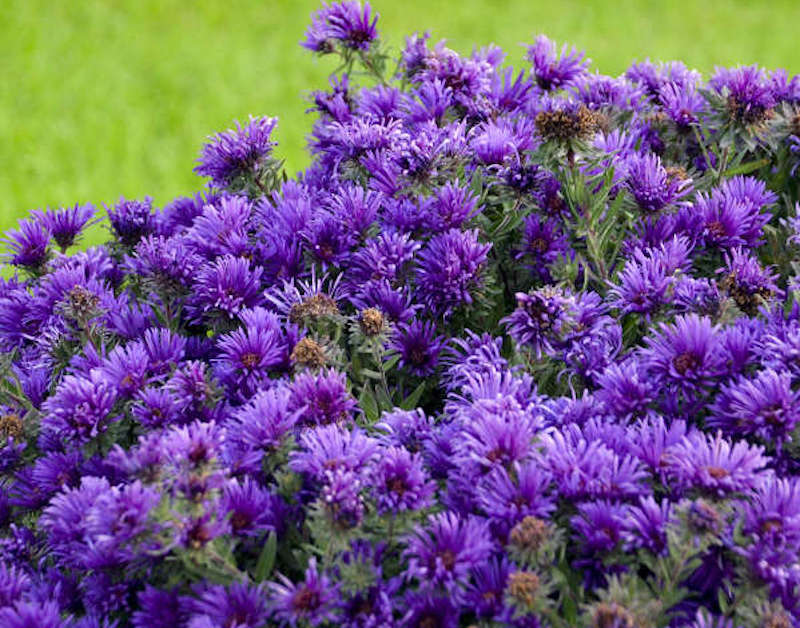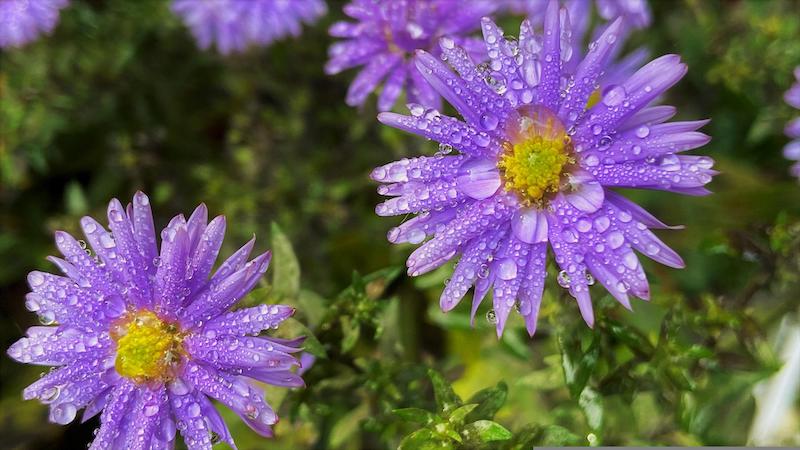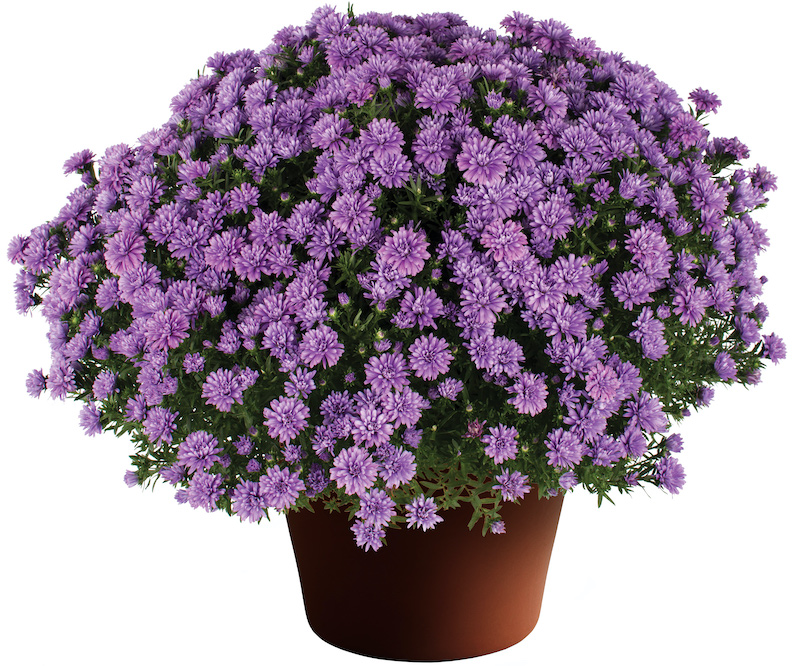Asters are native to North America and Eurasia and come in a wide range of shades from pink, blue, purple, and white, providing a last burst of color in the fall. Being relatively easy to grow with few diseases or insect pests to bother them, they are a favorite among gardeners. Ranging from a height of 1 foot to 6 feet tall, there is an aster to fill almost any space.
Asters prefer full sun but will do well in partial shade, although they will flower less. They are prolific growers and will rapidly reach flowering size with little help from the home gardener. Asters will spread to form a clump, which can easily be divided in spring or fall and replanted elsewhere in the perennial bed. Asters will also readily self-seed and naturalize an area over several years. This perennial is cold hardy in zones 3 to 9.

Planting Asters
Asters do well in average, well-drained garden soil and should be planted in full sun for maximum flowering. They are best planted in the spring or fall when temperatures are mild and rainfall is expected. Asters prefer an acidic soil and benefit from addition of compost or peat moss to improve and acidify the soil.
Watering Asters
Asters prefer soil that is well-drained and never soggy. They should be watered regularly after planting to help them settle in. Once mature, they develop drought tolerance, although they will bloom and grow best with regular watering during hot and dry weather.

Fertilizing Asters
Asters do not require fertilizer to grow. If desired, a slow- or time-released fertilizer may be applied to the base of the plant once in the spring. Asters would do equally well with a topdressing of compost applied in spring rather than a commercial fertilizer.
Pruning Asters
Asters require little in the way of pruning. If desired, they may be cut to half their height in midsummer to increase the bushiness of the plant. Once the foliage starts to die back, give them a final cut to a few inches above the soil line in late fall.
Caring For Asters in Pots
Asters do well in pots as long as they are provided ample drainage in a loose, friable soil. Place the pots in full sun, as flowering may be diminished in shade. Watered well on a regular basis, asters will mature through the season and flower in the fall. When the plant starts to die back, cut back spent flower stalks to just above soil level and either move the pot to a protected space or transplant the aster into the ground for next season. Repot in spring when the plant shows signs of active growth.

Winter Care for Asters
Asters do not require much in terms of winter care. They are tough perennials and survive the winter well in colder climates, where there are extended periods below freezing. Some gardeners may add a light mulch of salt marsh hay or straw to the top of the plant, but it is not necessary.
Common Aster Care Questions
Do Asters Need Light?
Asters grow and flower best in full sun. Some varieties will tolerate part shade but will have fewer flowers.
How Long Do Asters Last?
Most species of aster are perennial plants with a lifespan of up to 10 years, although a few species are annuals with a lifespan of one year.
Are Asters An Herb?
The stems and roots are used as plasters or dressings in healing wounds and relieving pain. The root is also used to reduce fever and diarrhea. In China, the roots and leaves are used in traditional medicine for coughs and colds.
Are Asters Edible?
Aster's fresh flowers can be added to salads and leaves may be dried or boiled for tea for medicinal purposes.
Have a question about Aster? Fill out the form below and we will try and get back to your question as soon as possible. We may even feature your question in this article to help other gardeners!
 |
Author Chris Link - Published 08-02-2022 |
